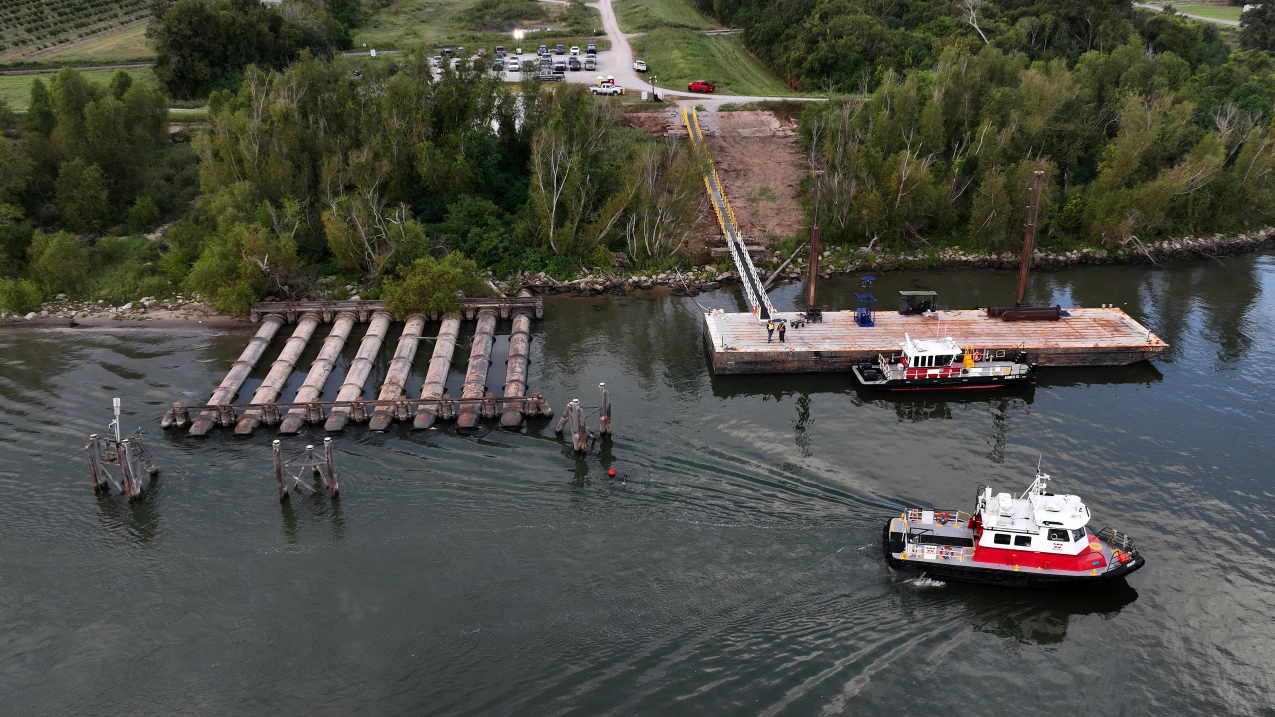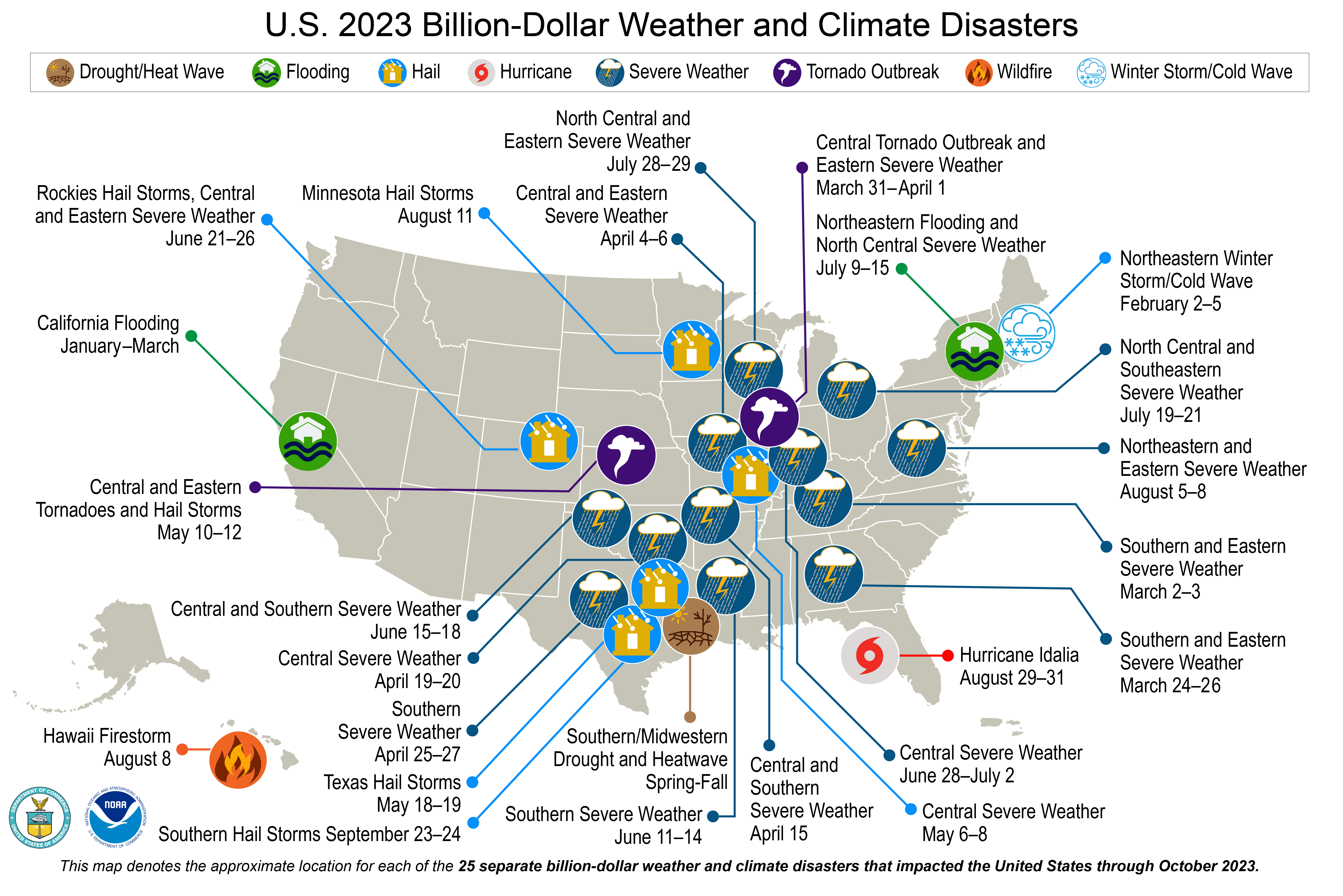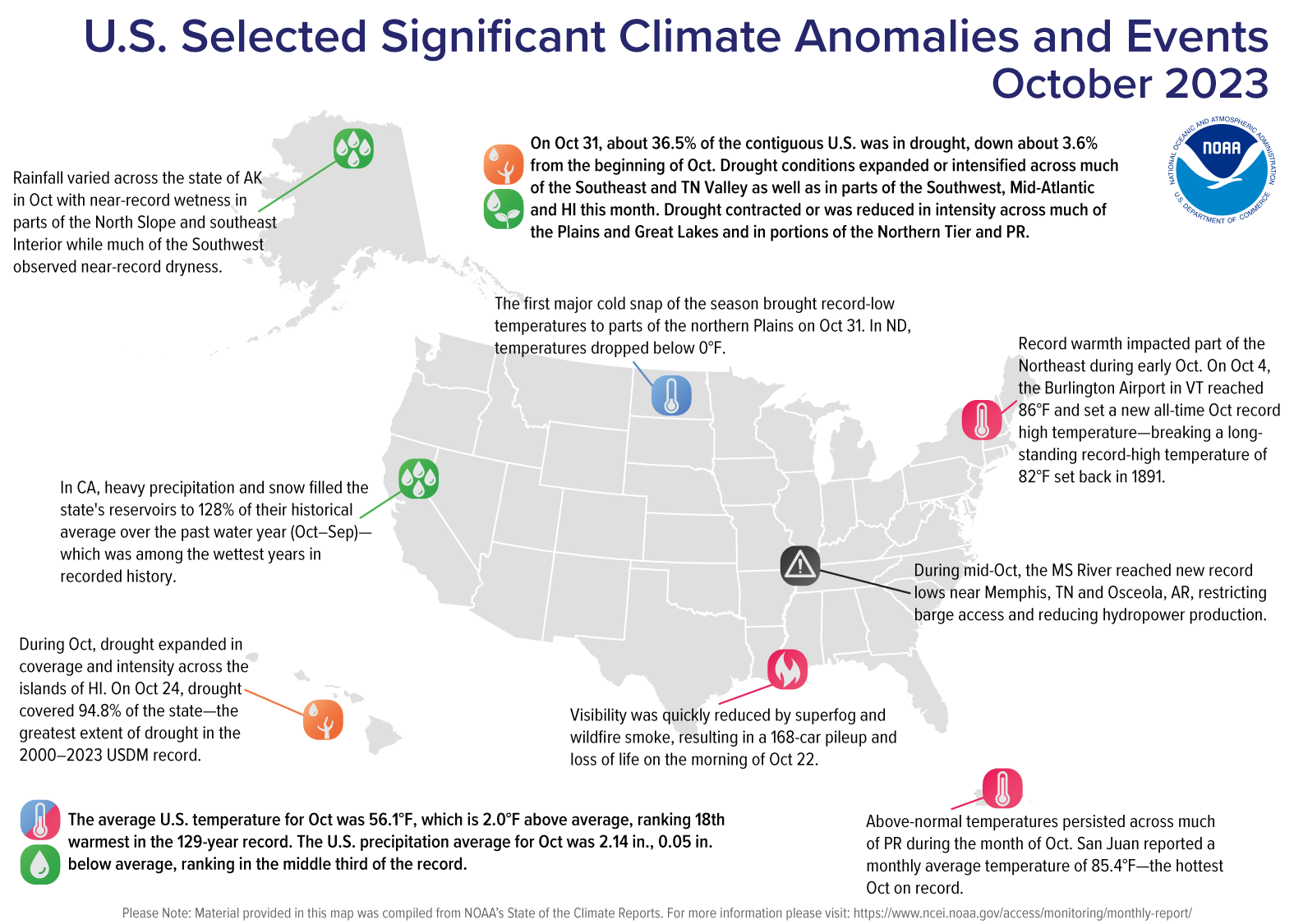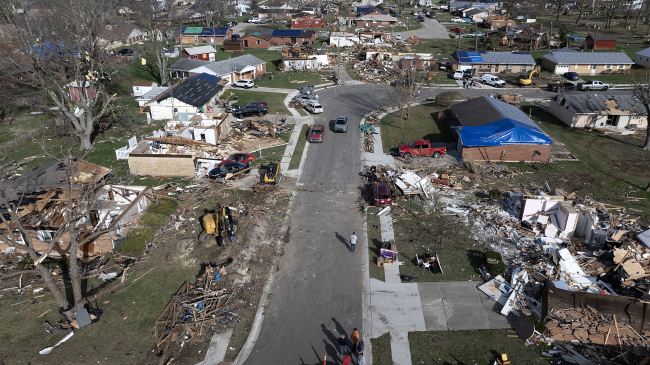U.S. struck with record 25 separate billion-dollar disasters so far this year

October 9, 2023: An aerial view shows low water levels on the Mississippi River in Belle Chasse, Louisiana, revealing pipes that are typically underwater. The low water levels caused barges and ships to run aground along parts of the Mississippi River in October and created saltwater intrusion concerns in southern Louisiana. (Image credit: Justin Sullivan/Getty Images)
A relatively warm October and expanding drought conditions across the Lower Mississippi Valley helped drop water levels to historic lows along parts of the Mississippi River last month.
The U.S. also confirmed another billion-dollar disaster in October, bringing the total to a record 25 disasters in the first 10 months — the largest number of disasters for any year since NOAA has kept track of these types of events.
Here are more highlights from NOAA’s latest monthly U.S. climate report:
Climate by the numbers
October 2023
The average October temperature across the contiguous U.S. was 56.1 degrees F, 2.0 degrees above the 20th-century average, ranking as the 18th-warmest October in NOAA’s 129-year climate record.
Maine ranked second warmest on record for October, while Vermont and New Hampshire each ranked third warmest. Six other states — Connecticut, Massachusetts, New Jersey, New Mexico, New York and Rhode Island — each saw a top-10 warmest October on record.
The average precipitation across the Lower 48 was 2.14 inches — 0.05 of an inch below average — placing the month in the middle third of the historical October climate record.
North Carolina had its 10th-driest October on record while no state saw an October that ranked among their top-10 wettest Octobers on record.
Year to date (YTD, January through October 2023)
The average U.S. temperature for the YTD was 56.9 degrees F, 1.9 degrees above the 20th-century average, ranking as the 11th-warmest such YTD in the climate record.
Florida, Louisiana, Mississippi and Texas each ranked warmest on record for the YTD, while Connecticut, Maine, Maryland, Massachusetts, New Hampshire, New Jersey, Rhode Island and Vermont each ranked second warmest for the January–October period. No state experienced a top-10 coldest such YTD on record.
The U.S. precipitation total for the YTD was 25.50 inches — 0.14 of an inch above average — ranking in the middle third of the January-October climate record. Wyoming and Massachusetts ranked fourth wettest on record for this YTD while Connecticut, Maine, and Nevada each ranked fifth wettest. Meanwhile, Maryland logged its seventh-driest such YTD on record.

Billion-dollar disasters
One new billion-dollar weather and climate disaster was confirmed in October after severe thunderstorms brought damaging winds and large hail to parts of the southern Plains from September 23-24.
To date, there have been a record 25 separate weather and climate disaster events this year, each with losses exceeding $1 billion. These disasters consisted of:
- 19 severe storm events.
- Two flooding events.
- One tropical cyclone.
- One winter storm.
- One wildfire event.
- One drought/heat wave event.
For this YTD period, the first 10 months of 2023 rank highest for disaster count, ahead of those of 2020 which saw 19 disasters at this point in the year. The total cost of the 2023 events exceeds $73.8 billion.
The U.S. has sustained 373 separate weather and climate disasters since 1980, where overall damages/costs reached or exceeded $1 billion (including Consumer Price Index adjustment to 2023). The total cost of these 373 events exceeds $2.645 trillion.

Other notable highlights from this report for October
The Mississippi River ran historically low again: Warm temperatures and lack of rainfall resulted in the expansion of drought coverage and intensity across parts of the Mississippi Valley, leading to record-low water levels along parts of the Mississippi River for the second year in a row. The low water levels caused barges and ships to run aground during one of the busiest times of the year to ship grain, and created saltwater intrusion concerns in southern Louisiana.
Persistent heat brought record-breaking temperatures to portions of the U.S.: During early October, record warmth impacted parts of the Northeast. On October 4, the Burlington Airport in Vermont reached 86 degrees F and set a new all-time October record high temperature — breaking a long-standing record high temperature of 82 degrees F set in 1891.
Above-normal temperatures also persisted across much of Puerto Rico during October 2023. San Juan International Airport reported a monthly average temperature of 85.4 degrees F, making it Puerto Rico’s hottest October and fifth-warmest month on record.
More > Access NOAA’s latest climate report and download the images.
John Bateman, nesdis.pa@noaa.gov, (202) 424-0929



